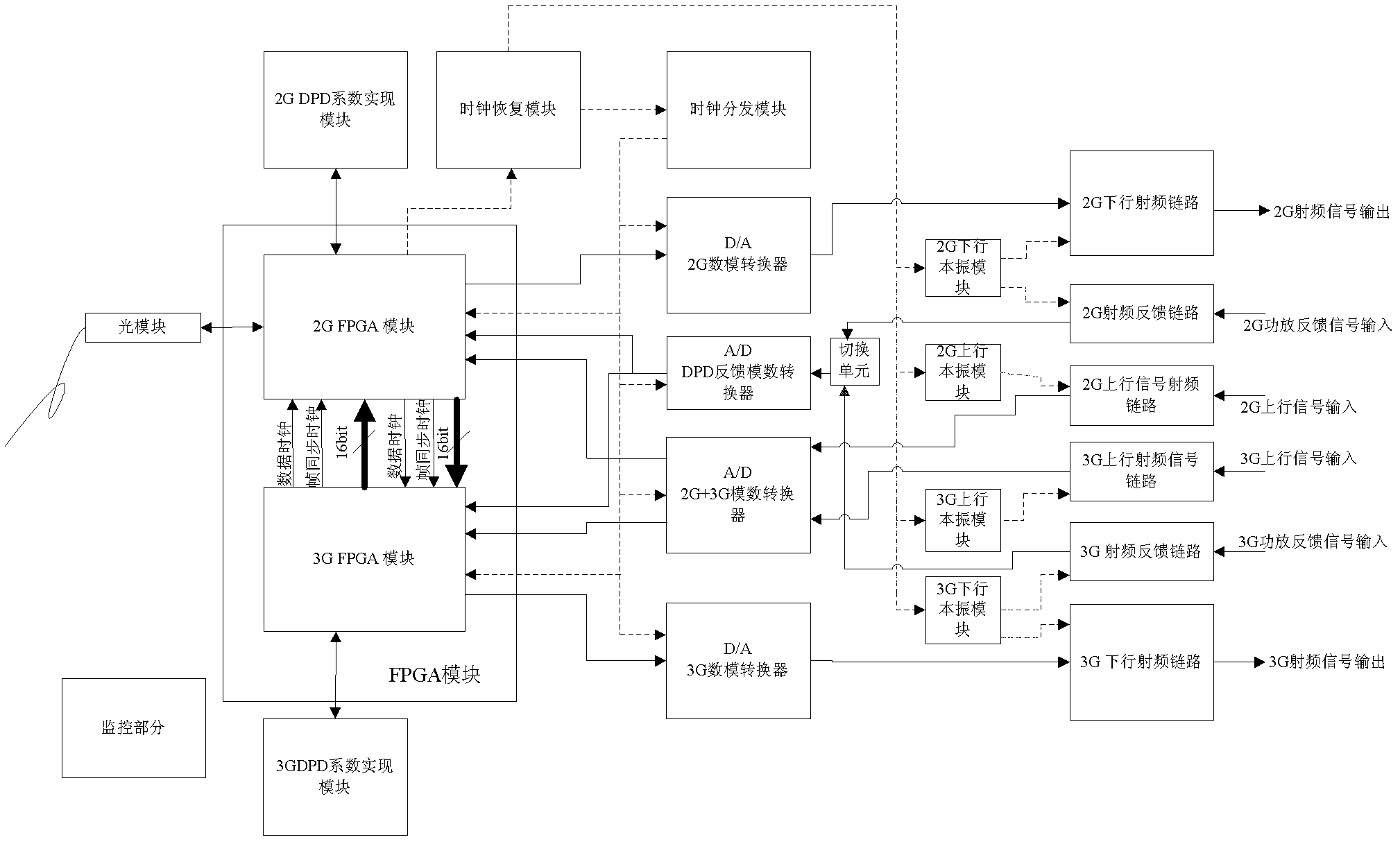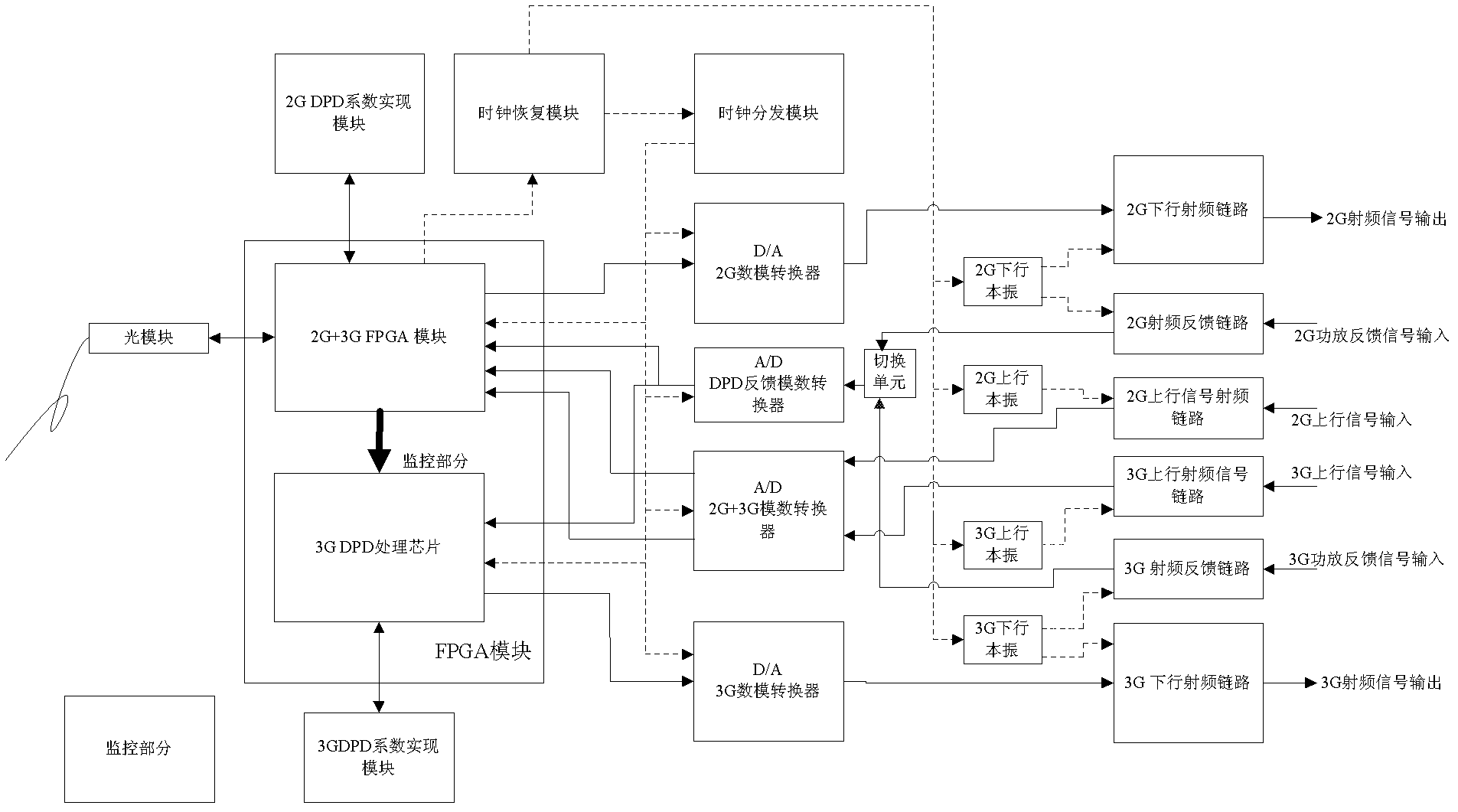Transceiver capable of simultaneously covering second generation (2G) and third generation (3G) signals and signal processing method of transceiver
A transceiver and signal processing technology, applied in the field of mobile communications, can solve the problems of wasting human resources, wasting resources, and wasting transceiver costs, and achieve the effects of simplifying construction workload, saving hardware costs, and promoting coverage and promotion
- Summary
- Abstract
- Description
- Claims
- Application Information
AI Technical Summary
Problems solved by technology
Method used
Image
Examples
Embodiment 1
[0050] figure 1 and figure 2 It is a structural schematic diagram of a transceiver covering both 2G and 3G signals. figure 2 yes figure 1 a more optimal structure. The transceiver specifically includes:
[0051] Optical module, FPGA module, clock recovery module, clock distribution module, DPD feedback analog-to-digital converter A / D, 2G+3G analog-to-digital converter A / D, monitoring part, switching unit;
[0052] 2G DPD coefficient realization module, 2G digital-to-analog converter D / A, 2G downlink local oscillator module, 2G uplink local oscillator module, 2G downlink radio frequency link, 2G radio frequency feedback link, 2G uplink signal radio frequency link;
[0053] 3G DPD coefficient realization module, 3G digital-to-analog converter D / A, 3G downlink local oscillator module, 3G uplink local oscillator module, 3G downlink radio frequency link, 3G radio frequency feedback link, 3G uplink signal radio frequency link;
[0054] The FPGA module is connected to the opti...
PUM
 Login to View More
Login to View More Abstract
Description
Claims
Application Information
 Login to View More
Login to View More - R&D
- Intellectual Property
- Life Sciences
- Materials
- Tech Scout
- Unparalleled Data Quality
- Higher Quality Content
- 60% Fewer Hallucinations
Browse by: Latest US Patents, China's latest patents, Technical Efficacy Thesaurus, Application Domain, Technology Topic, Popular Technical Reports.
© 2025 PatSnap. All rights reserved.Legal|Privacy policy|Modern Slavery Act Transparency Statement|Sitemap|About US| Contact US: help@patsnap.com



